Anxiety is one of those tricky emotions that we all experience and can all relate to but that for some people gets out of control and interferes with life.
Anxiety is one of those tricky emotions that we all experience and can all relate to but that for some people gets out of control and interferes with life. What makes it tricky is that anxiety, or the fear of negative consequences, is actually helpful in many cases. It motivates us (such as in preparation for an upcoming test) and protects us from danger (such as in taking precautions not to attract bears when camping). Anxiety in itself is not a problem. But anxiety disorders can significantly limit quality of life for people who suffer from them.
What are anxiety disorders?
Anxiety disorders are distinguishable from normal anxiety in terms of the duration, frequency, and intensity of the anxiety, as well as its impact on a person’s functioning and wellbeing. The fear and worry that someone with an anxiety disorder experiences is out of proportion to the situation that triggers it—or it may not even have a specific trigger at all. According to the Anxiety and Depression Association of America (ADAA), anxiety disorders are the most common mental illness in the U.S., affecting 40 million adults age 18 and over.
What are the types of anxiety disorders?
Anxiety disorders can be mild to severe, affecting not only the way a person thinks, feels, and behaves, but also interfering with their relationships and their functioning in daily activities, such as at work or school. There are a number of different types of anxiety disorders, each characterized by specific triggers and symptoms. Here are a few:
- Generalized anxiety disorder (GAD) – People who suffer from GAD are plagued by excessive worry about a range of concerns from health and work to natural disasters. They cannot control their worry and may even believe that the worry itself prevents bad things from happening. GAD affects 6.8 million adults in the U.S.
- Panic disorder – Panic disorder is characterized by sudden and repeated attacks of extreme fear. These attacks include physiological symptoms such as accelerated heart rate, sweating, and shaking. People with panic disorder experience intense worry about these attacks and may even avoid places where the attacks occurred. Approximately 6 million adults in the U.S. suffer from panic disorder.
- Social anxiety disorder (SAD) – Also called social phobia, SAD is a form of extreme self-consciousness where those who suffer from it fear judgment, rejection, and humiliation in social situations. People with SAD often experience nausea, sweating, rapid heart rate and other signs of severe stress when faced with the need to perform or engage socially. They also tend to avoid social situations because of these symptoms.
- Phobias – People with phobias have a powerful and unreasonable fear of specific objects, places, or situations. These fears are often so intense that the people who suffer from them rearrange their lives to avoid the trigger, thus impacting work, self-esteem, and relationships. Specific phobias often include everyday things and situations. Phobias include: arachnophobia (fear of spiders), agoraphobia (fear of open or crowded spaces), mysophobia (fear of germs), and many more.
- Post-traumatic stress disorder (PTSD) – PTSD is an anxiety disorder triggered by a specific emotional or physical trauma. Those with PTSD may suffer from stress and anxiety or emotional troubles for years after the event occurred. They may relive the trauma and become triggered by thoughts, loud noises, scents, or other reminders of the event. Like those with panic disorder and phobias, people with PTSD often avoid places and situations that may trigger their fear and stress.
- Obsessive-compulsive disorder (OCD) – Those who suffer from OCD find themselves preoccupied with specific, fearful thoughts and/or an intense need to perform a particular action in a particular way. Some people are plagued with obsessive thoughts, some with compulsive behaviors, and some with both. People with OCD often experience shame over their inability to control their thoughts and behaviors.
Anxiety disorders are treatable
The good news is that although anxiety disorders are the most common mental illness in the U.S., they’re also highly treatable. Unfortunately, less than 40% of those who suffer from anxiety disorders receive treatment. Many of those who do receive treatment, however, experience significant relief and are able to live healthy, productive lives unencumbered by excessive fear and worry. Some effective forms of treatment include: talk therapy, cognitive behavioral therapy, and medication.
If you or a loved one suffers from an anxiety disorder, Alvarado Parkway Institute can help. We offer both inpatient and outpatient programs designed to help patients with a range of mental disorders learn to identify and manage their symptoms, develop strategies for stress-management, and make healthy choices that support their overall wellbeing.
For more information on our treatment for anxiety disorders, addictive disorders, or other mental health issues, please contact us via the form on our website or call our 24-hour crisis line at 619-667-6125 today.

